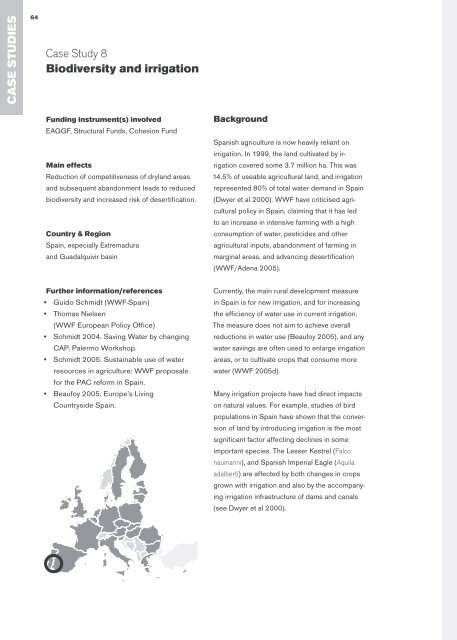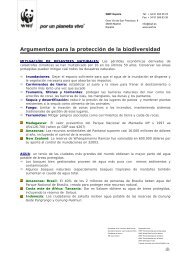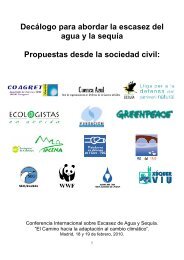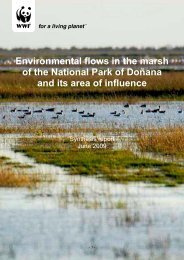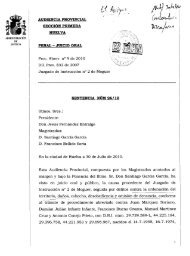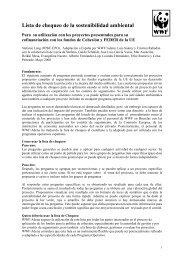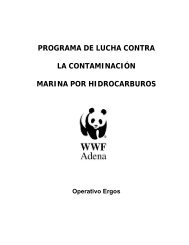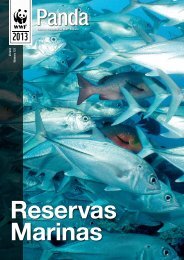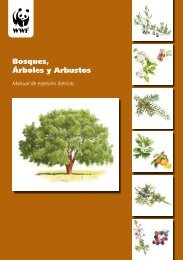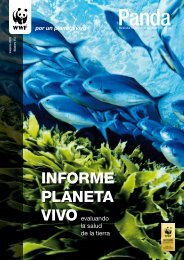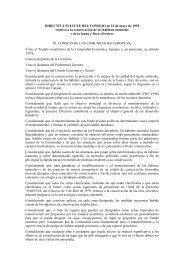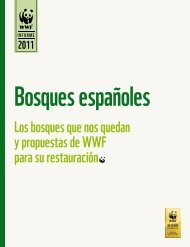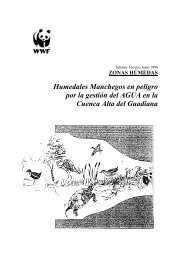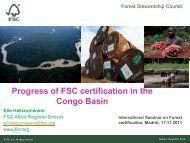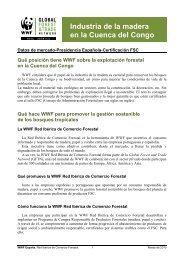Conflicting EU Funds - WWF
Conflicting EU Funds - WWF
Conflicting EU Funds - WWF
Create successful ePaper yourself
Turn your PDF publications into a flip-book with our unique Google optimized e-Paper software.
CASE STUDIES<br />
64<br />
Case Study 8<br />
Biodiversity and irrigation<br />
Funding instrument(s) involved<br />
EAGGF, Structural <strong>Funds</strong>, Cohesion Fund<br />
Main effects<br />
Reduction of competitiveness of dryland areas<br />
and subsequent abandonment leads to reduced<br />
biodiversity and increased risk of desertification.<br />
Country & Region<br />
Spain, especially Extremadura<br />
and Guadalquivir basin<br />
Background<br />
Spanish agriculture is now heavily reliant on<br />
irrigation. In 1999, the land cultivated by irrigation<br />
covered some 3.7 million ha. This was<br />
14.5% of useable agricultural land, and irrigation<br />
represented 80% of total water demand in Spain<br />
(Dwyer et al 2000). <strong>WWF</strong> have criticised agricultural<br />
policy in Spain, claiming that it has led<br />
to an increase in intensive farming with a high<br />
consumption of water, pesticides and other<br />
agricultural inputs, abandonment of farming in<br />
marginal areas, and advancing desertification<br />
(<strong>WWF</strong>/Adena 2005).<br />
Further information/references<br />
• Guido Schmidt (<strong>WWF</strong>-Spain)<br />
• Thomas Nielsen<br />
(<strong>WWF</strong> European Policy Office)<br />
• Schmidt 2004. Saving Water by changing<br />
CAP, Palermo Workshop.<br />
• Schmidt 2005. Sustainable use of water<br />
resources in agriculture: <strong>WWF</strong> proposals<br />
for the PAC reform in Spain.<br />
• Beaufoy 2005. Europe’s Living<br />
Countryside Spain.<br />
Currently, the main rural development measure<br />
in Spain is for new irrigation, and for increasing<br />
the efficiency of water use in current irrigation.<br />
The measure does not aim to achieve overall<br />
reductions in water use (Beaufoy 2005), and any<br />
water savings are often used to enlarge irrigation<br />
areas, or to cultivate crops that consume more<br />
water (<strong>WWF</strong> 2005d).<br />
Many irrigation projects have had direct impacts<br />
on natural values. For example, studies of bird<br />
populations in Spain have shown that the conversion<br />
of land by introducing irrigation is the most<br />
significant factor affecting declines in some<br />
important species. The Lesser Kestrel (Falco<br />
naumanni), and Spanish Imperial Eagle (Aquila<br />
adalberti) are affected by both changes in crops<br />
grown with irrigation and also by the accompanying<br />
irrigation infrastructure of dams and canals<br />
(see Dwyer et al 2000).


